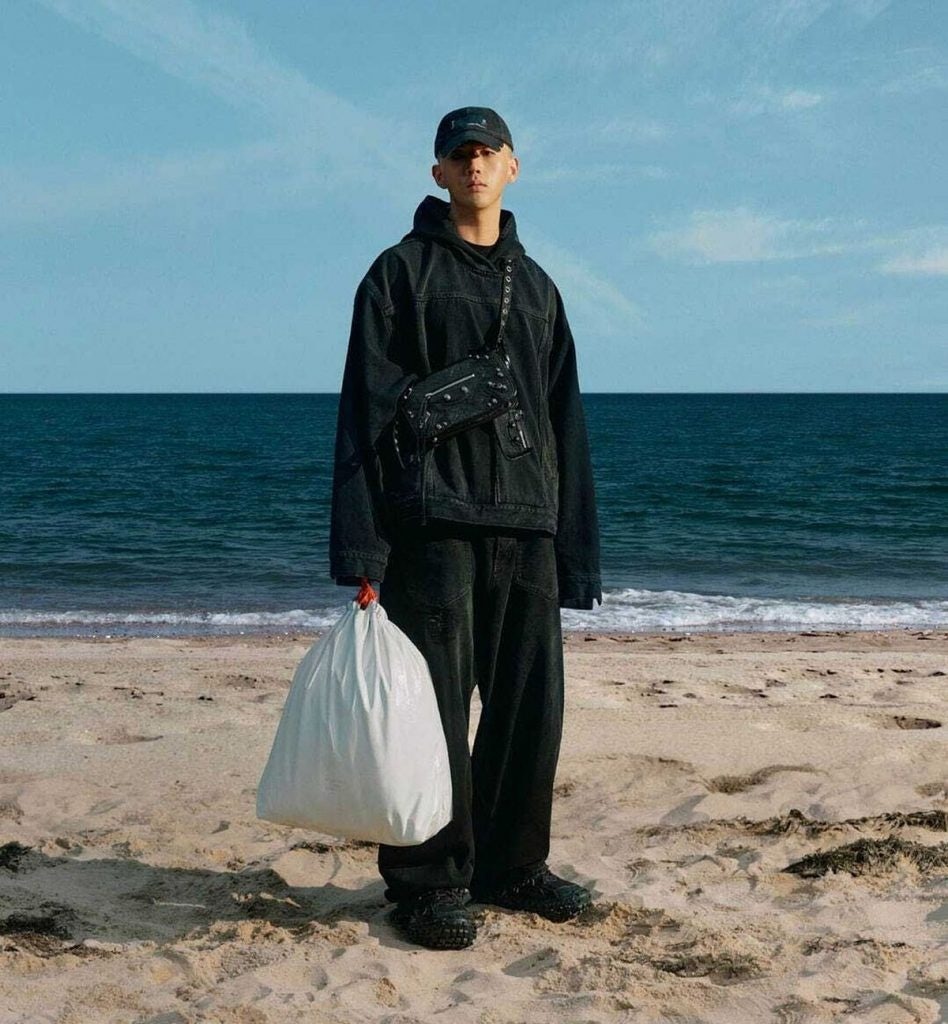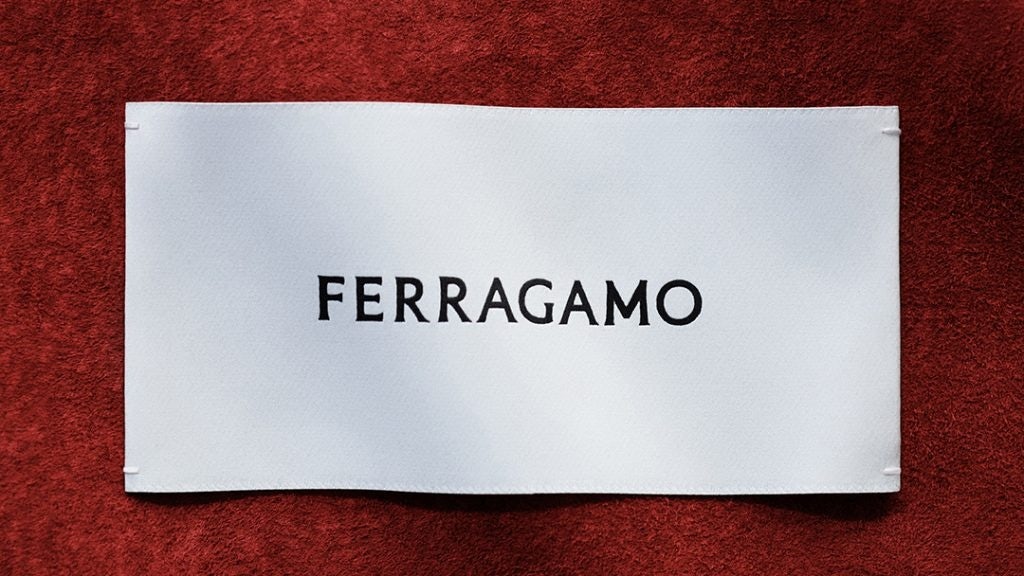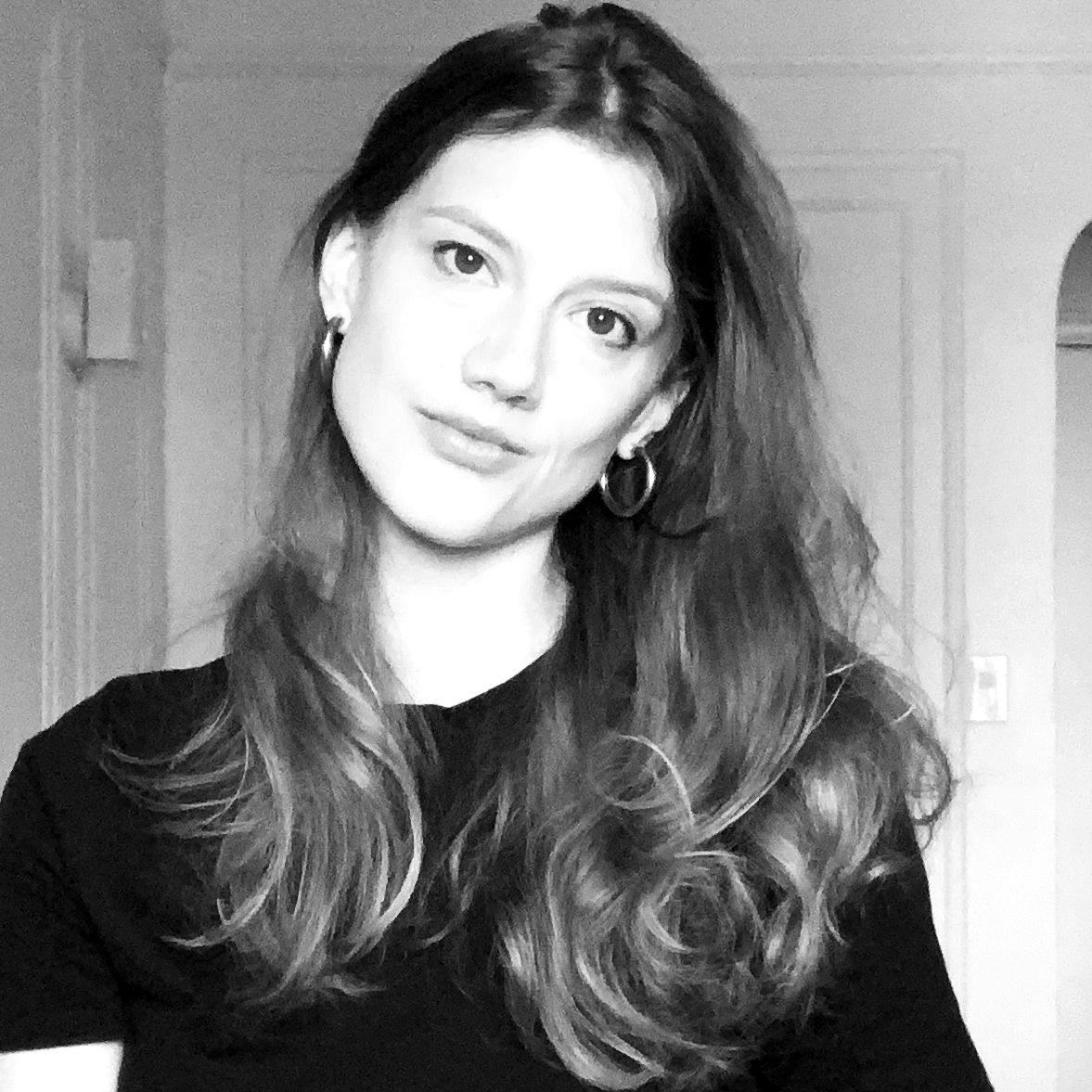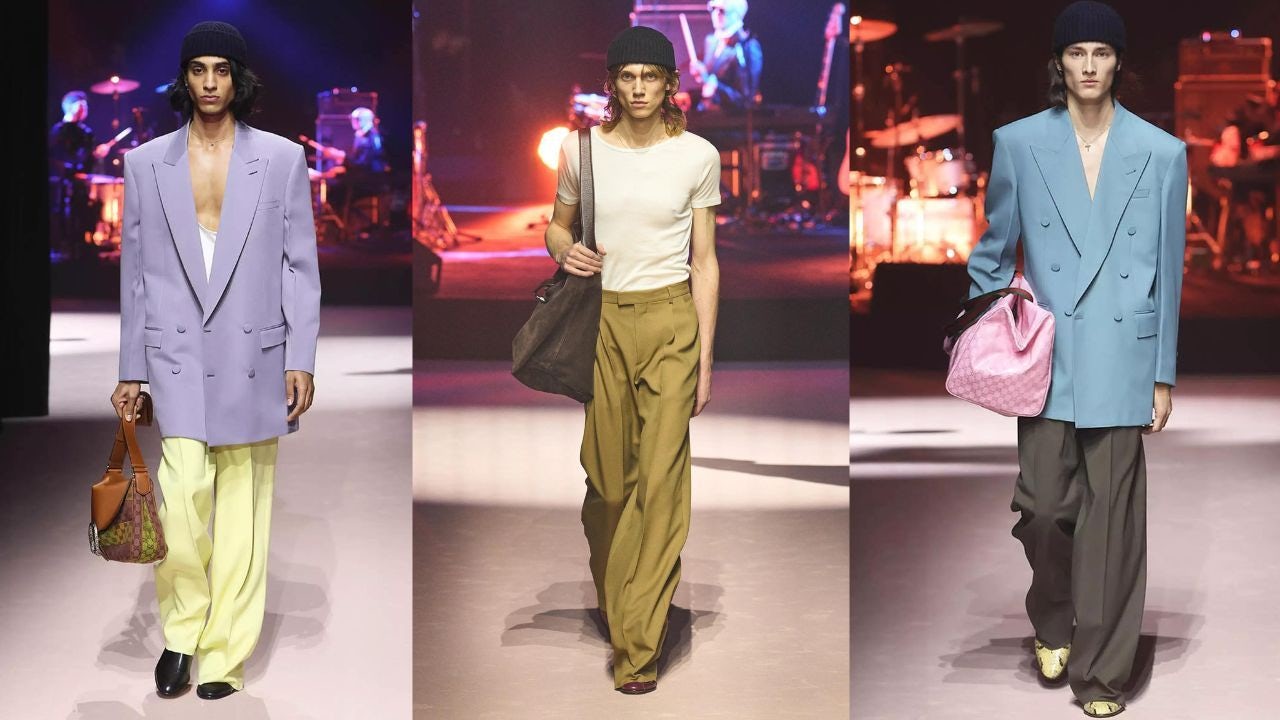What’s old is new again. Burberry’s newly minted creative director Daniel Lee showcased his much-anticipated first collection for the British luxury brand this week in London. The young designer was tasked with moving the brand forward and did so by utilizing many classic motifs: English roses, hunting-lodge hats, and, of course, Burberry plaid on everything.
Coupled with Lee’s first campaign for Burberry, released earlier this month, the collection makes the case for his focus at the house: heritage. The look of that campaign was likely familiar to longtime fans of the brand: Out was the blocky sans serif logo created in 2018 during Riccardo Tisci’s tenure, and in was a more classic serif font along with a new version of the Equestrian Knight Device (EKD) that was first used by the house in 1901. The return to a serif font piqued the fashion industry’s interest as a move away from what creative directors Thierry Brunfaut and Tom Greenwood have called “blanding.”
Back In The Spotlight#
Burberry’s rebrand is part of a larger trend that goes beyond just a return to more decorative serif fonts. Luxury fashion brands are turning away from relying on celebrity creative directors to drive brand awareness and shift the focus back to the houses themselves.
“The new Burberry is very little about Daniel Lee. It is very much about Burberry. And this is what made it refreshing and interesting to a lot of people,” says Marta Indeka, foresight analyst at The Future Laboratory consultancy.
Throughout the 2010s, luxury fashion brands frequently welcomed splashy new creative directors, with brands seemingly one-upping each other each season with bigger and more radical names. Many of those directors, like Riccardo Tisci at Burberry and Hedi Slimane at Celine, stripped away their brands’ old school logo for a modern sans serif font.
The intent was to make heritage houses feel fresh, but the result was that the brands themselves became interchangeable backdrops for a game of creative director musical chairs.
“It was a very unsustainable model that couldn’t go on forever,” says Indeka. “There’s a limitation if you root your success in one person. If the designer leaves a brand, then you're left with a hole in your brand identity.”
Star Power#
Luxury brands are now coming up against the limits of a strategy that revolves around superstar creative directors.
When he took the helm at Balenciaga in 2015, Vetements founder Demna Gvasalia, known as Demna, used his ironic take on fashion to keep the brand in the spotlight season after season. But his provocative creations, like potato chip and trash bag purses, also took the focus away from the silhouettes and cuts that were once founder Cristóbal Balenciaga’s hallmarks. Following intense backlashes to campaigns that were criticized for promoting the sexualization of children, the house will now “go back to the roots of Balenciaga,” as Demna told Vogue in a recent Qamp;A.

Balenciaga’s Fall/Winter 2023 show at Paris Fashion Week next month will test whether the brand’s designs can supersede its now controversial creative director. But the difficult position Demna and Balenciaga find themselves in doesn’t mean storied houses should remain static; instead, they need to maintain a delicate balance between promoting their heritage and updating their brand to speak to future generations.
“For heritage brands, it's important to have core signatures that are recognizable. The visual language including the logo are key to that,” says Christopher Morency, Chief Brand Officer at venture capital group Vanguards. “Where the branding should be synonymous with the actual brand, it should also be in tune with the times we live in.”
During his time as creative director at Gucci from 2015 to 2022, Alessandro Michele became a recognizable figure in his own right, standing out in maximalist outfits at the Met Gala alongside house ambassadors Harry Styles and Jared Leto. This type of approach represented “a moment in time,” notes Morency, as Michele helped define luxury fashion of the era.
Gucci and Michele have recognized that this era is drawing to a close before the Italian designer’s approach becomes dated.
“His maximalist aesthetic felt fresh when it came onto the scene. Nearly a decade later and it was going to run its course at one point as the world evolved,” Morency adds. “Could he have stayed in the role for another five years? Absolutely. But it had to evolve.”
By contrast, Michele’s replacement, Sabato De Sarno, who worked for many years under Pierpaolo Piccioli at Valentino, is a comparatively unknown figure. “It's refocusing Gucci on Gucci,” says Indeka of the appointment.
New Blood#
While brands like Balenciaga and Burberry are poised to recalibrate their brand identities by focusing on their heritage, there are times when a new creative director brings a much needed breath of fresh air to a brand whose identity has gone stale.
In 2022, Ferragamo welcomed Maximilian Davis, a young Black British designer who counts Rihanna among his fans, as the new creative director of the out-of-fashion fashion house. With him came a new logo, a block-lettered serif font in place of founder Salvatore Ferragamo’s original scrawl. That doesn’t need to mean a 360-degree rebranding, Indeka notes, but it is an opportunity to update the house with a fresh perspective.

That isn’t to say that the celebrity creative director will disappear. These days, celebrity status needs to be extremely high to truly elevate the house in question. Louis Vuitton is betting on such a strategy with its recent appointment of superstar music producer Pharrell Williams as successor to the late Virgil Abloh as menswear creative director.
There are brands that have never played this game of designer roulette, and designers who have resisted injecting their celebrity status into their creations.
“The master of brand faithfulness was undoubtedly Karl Lagerfeld, who was doing Chanel at Chanel, and Fendi at Fendi,” says Pierre Mallevays, founder of luxury Mamp;A advisory firm Savigny Partners and Co-Head of Merchant Banking at Stanhope Capital. “He was never doing ‘Karl at.’”
Lagerfeld understood that Chanel and Fendi were bigger than even his larger-than-life persona, and was subsequently able to keep those brands afloat for nearly half a century. For as much personal success as they may have, Morency notes that creative directors have to remember the bigger picture.
“The luxury house they work for has existed long before they were born and it will most likely be around long after they're gone,” he says. “The lesson here is evolution over revolution.”


